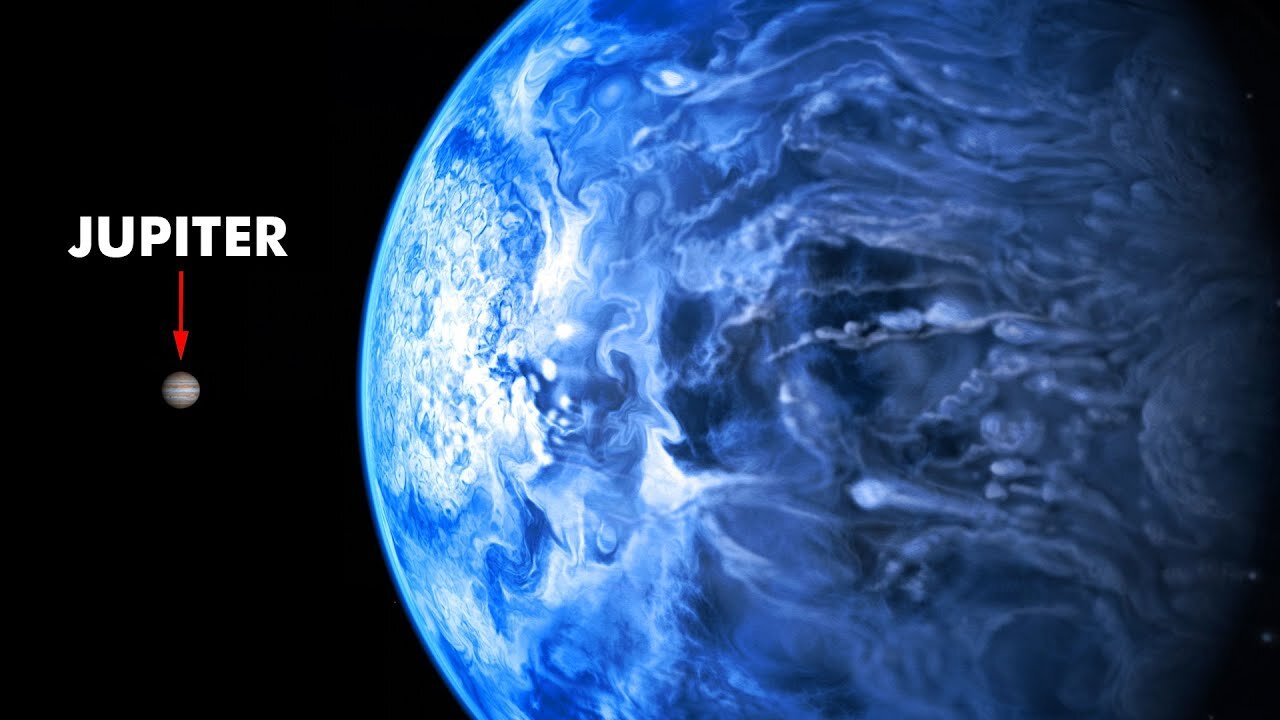Premium Only Content

Scientists Just Discovered The Largest Planet In The Universe!
The universe is full of fascinating objects, including planets, comets,
asteroids, stars more than 2,000 times the size of the Sun, and supermassive
black holes that have the power to rip celestial bodies apart.
It can be simpler to consider the nature of objects such as planets that are
nearby. Even though our Solar System is home to a number of large planets,
it makes sense to question if there are any larger planets out there. We are
looking at the largest planet in the universe because of this.
How large is this planet, where is it located, and how does it compare to
other planets in our neighborhood?
Join us as we explore the Largest Planet in the Universe discovered by
scientists.
We need a working definition to identify these celestial bodies even if the
answer to this issue may appear extremely straightforward.
The term "planet" has been given some fairly direct definitions. They'll claim
that an accretion disk surrounding a star is what creates a planet. But that
doesn't help us focus on the definition for a debate. Thankfully, we have a
regulating authority to provide us with the simple solution.
The International Astronomical Union defines a planet as having three
characteristics or having to perform three tasks:
It must move around a star. It must be substantial enough to be shaped
spherically by gravity. Its orbit around its star must be large enough for and
to pass through.
This definition caused controversy when it was first proposed because Pluto
was excluded from the list of planets in our Solar System. However, because
it excludes some celestial bodies from consideration, this definition is quite
useful.
The use of the term "exoplanet" must also be taken into account. An
exoplanet is, to put it simply, any planet outside of our Solar System.
And that leads us to AB Aur b, a massive exoplanet that resembles Jupiter.
This enormous planet, which is nine times the mass of Jupiter, was
discovered by scientists at an incredibly early stage of formation; they
describe it as still in the womb. This discovery casts doubt on the
conventional wisdom about how planets form.
The planet, a gas giant orbiting exceptionally far from its youthful host star,
was discovered and studied by scientists using the Hubble Space Telescope
in orbit and the Subaru Telescope near the peak of a dormant Hawaiian
volcano.
The largest planets in our solar system, Jupiter and Saturn, are examples of
gas giants. These planets are primarily made of hydrogen and helium, with
swirling gases encircling a smaller solid core.
This new research may hold the key to locating extraterrestrial life. "We
think it is still very early on in its 'birthing' process," said astrophysicist
Thayne Currie of the Subaru Telescope and the NASA-Ames Research Center.
Evidence indicates that this is the earliest stage of gas giant creation ever
seen.
It is contained within a vast disk of gas and dust, which contains the
elements necessary to create planets, and which encircles the star AB
Aurigae, which is 508 light-years (or 9.5 trillion kilometers) away from Earth.
Exoplanets, or planets outside of our solar system, have been discovered in
about 5,000 instances. One among the largest is this one, AB Aur b. It is
getting close to the minimum size required to be categorized as a planet as
opposed to a brown dwarf, a body halfway between a planet and a star. It is
heated by gas and dust falling into it.
Nearly all exoplanets that are now known have orbits that are closer to their
stars than the distance between our solar and its furthest planet, Neptune.
However, this planet orbits the sun at a distance that is 93 times greater
than that of Earth and three times that of Neptune. The process of its
genesis seems to depart from the typical planetary formation hypothesis.
As stated by astronomer and study co-author Olivier Guyon of the Subaru
Telescope and the University of Arizona, "the conventional thinking is that
most, if not all, planets form by the slow accretion of solids onto a rocky
core, and that gas giants go through this phase before the solid core is
massive enough to start accreting gas.
Disclaimer Fair Use:
1. The videos have no negative impact on the original works.
2. The videos we make are used for educational purposes.
3. The videos are transformative in nature.
4. We use only the audio component and tiny pieces of video footage, only if it's necessary.
DISCLAIMER:
Our channel is purely made for entertainment purposes, based on facts, rumors, and fiction.
Copyright Disclaimer under section 107 of the Copyright Act 1976, allowance is made for “fair use” for purposes such as criticism, comment, news reporting, teaching, scholarship, education, and research. Fair use is a use permitted by copyright statutes that might otherwise be infringing.
-
 10:47
10:47
Future Space
3 years agoIt's Reality! Astronomers Might've Found First Ever White Hole
63 -

Donald Trump Jr.
3 hours agoLive With FBI Director Kash Patel, Breaking News!! | Triggered Ep.297
5.74K62 -
 LIVE
LIVE
vivafrei
1 hour agoFBI Announces ARREST of Suspected Pipe Bomber! Judge Boasberg Should be IMPEACHED! & MORE!
3,163 watching -

The Quartering
1 hour agoJ6 Pipe Bomber Arrested, Candace Owens TPUSA Debate Predictions & My Staff Caused A Lawsuit!
32.4K27 -
 34:26
34:26
Misfits Mania
4 hours ago $7.97 earnedMISFITS MANIA: Launch Press Conference
71.7K14 -
 LIVE
LIVE
Dr Disrespect
4 hours ago🔴LIVE - DR DISRESPECT - WARZONE x BLACK OPS 7 - SEASON 1 INTEGRATION
1,441 watching -

DeVory Darkins
3 hours agoBOMBSHELL: Congress drops BRUTAL NEWS for Tim Walz after Comer announces Probe
145K38 -
 1:15:17
1:15:17
Sean Unpaved
3 hours agoPlayoff Implications On The Line For Cowboys vs. Lions NFC SHOWDOWN! | UNPAVED
22.4K -
 59:30
59:30
Simply Bitcoin
21 hours ago $0.31 earnedThe Bitcoin Crucible w/ Alex Stanczyk & Daniel Batten - Episode 11
10.2K3 -
 8:44
8:44
Jamesons Travels
17 hours ago $0.85 earnedCongress Created This Mess…Now Troops Pay the Price
8.55K15